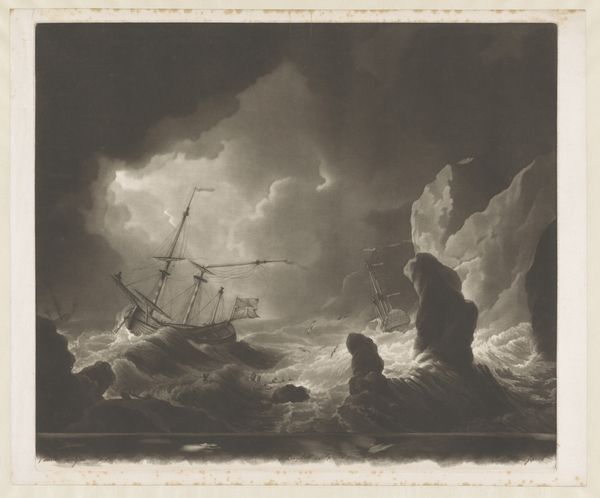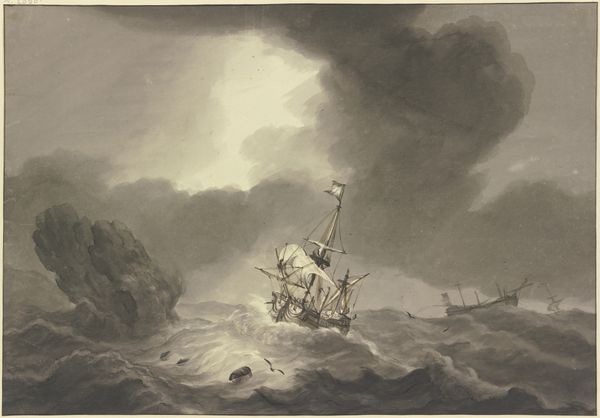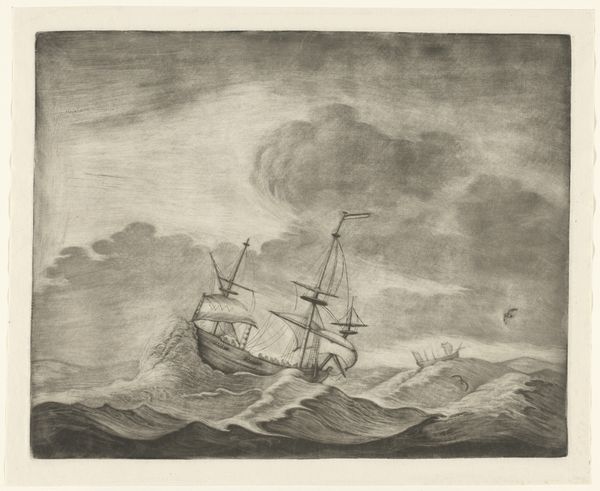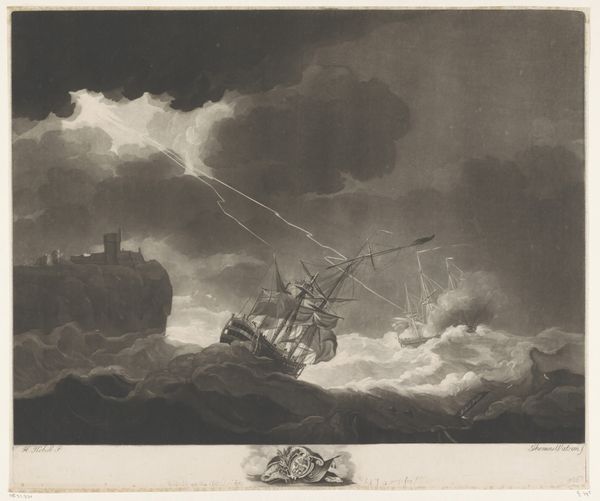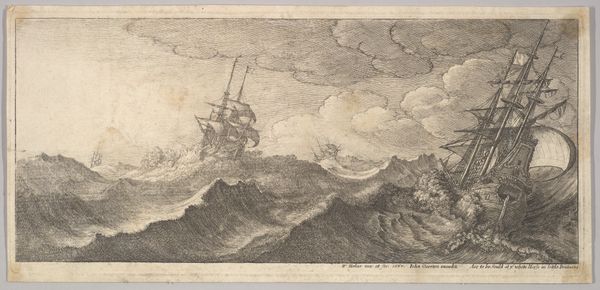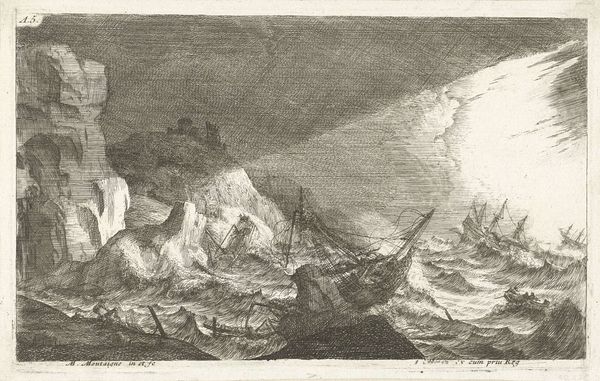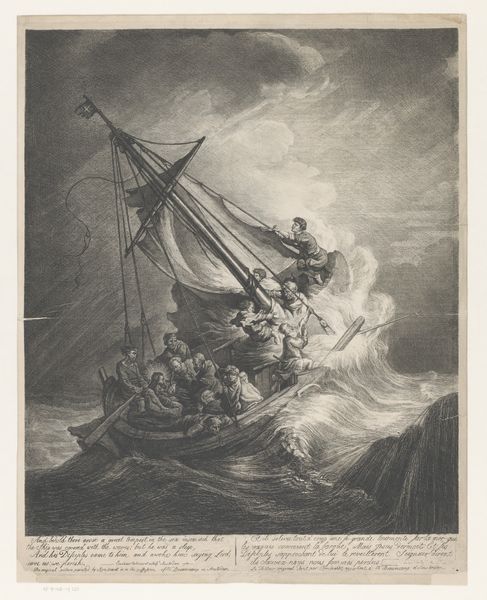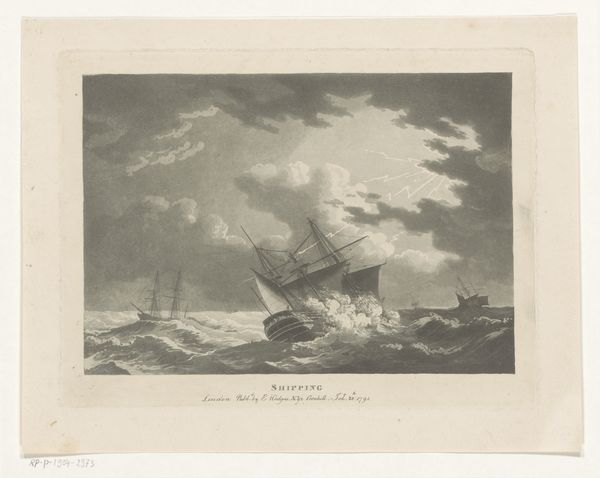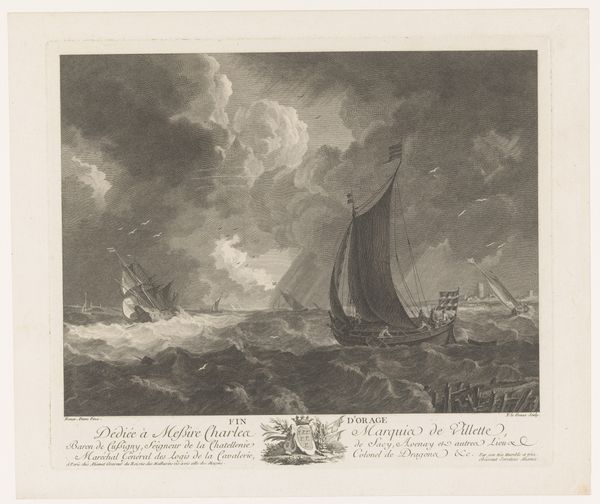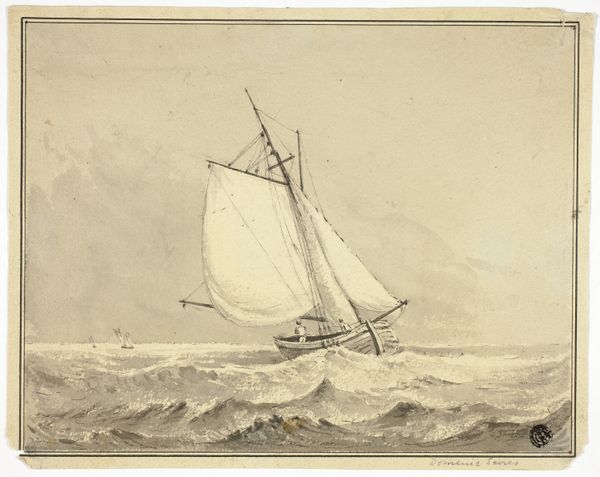
Dimensions: height 470 mm, width 532 mm
Copyright: Rijks Museum: Open Domain
Curator: Here we have "Storm at Sea with Shipwreck and Sinking Ship" by James Watson, created sometime between 1758 and 1790. It's currently held in the Rijksmuseum. Editor: My gut reaction? Turbulent. I feel like I’m right there, about to be swallowed by a massive wave. It's raw, untamed energy in graphite and charcoal. Curator: Indeed. Note how Watson masterfully utilizes the contrasting values of light and dark, manipulating charcoal and graphite to depict the tumultuous sea and sky. The composition adheres to certain academic conventions, yet the sheer drama propels it into Romanticism. Editor: The way he captures the light breaking through those monstrous clouds...almost feels like hope amidst total chaos, right? You have these tiny ships, practically toys being tossed about, and yet… life persists. Gives me chills. Curator: Precisely. The chiaroscuro effect amplifies the scene's dramatic tension, underlining the Romantic era's fascination with sublime power and humanity's frailty in the face of nature. Semiotically, we observe a visual articulation of existential anxiety. Editor: Existential anxiety in a shipwreck! That's a great title for my next poem, actually. But seriously, Watson is capturing more than just a storm, isn’t he? He's drawing on deeper emotional currents; a shipwreck mirroring internal turmoil. Curator: A persuasive reading, if perhaps steered toward subjective interpretation. However, considering the prevalence of narrative art during this period, we might posit that Watson seeks to engage in moral or allegorical instruction through potent visual storytelling. Editor: True, maybe. All I know is that the intensity in this drawing gets under your skin. It's more than just observing—it's almost experiencing disaster. Thanks, Watson, for stirring my own creative storm. Curator: A potent example of 18th-century graphic arts which elicits discussion about form, technique, and interpretive possibilities, illustrating the continuing resonance of dramatic landscapes within art history.
Comments
No comments
Be the first to comment and join the conversation on the ultimate creative platform.
